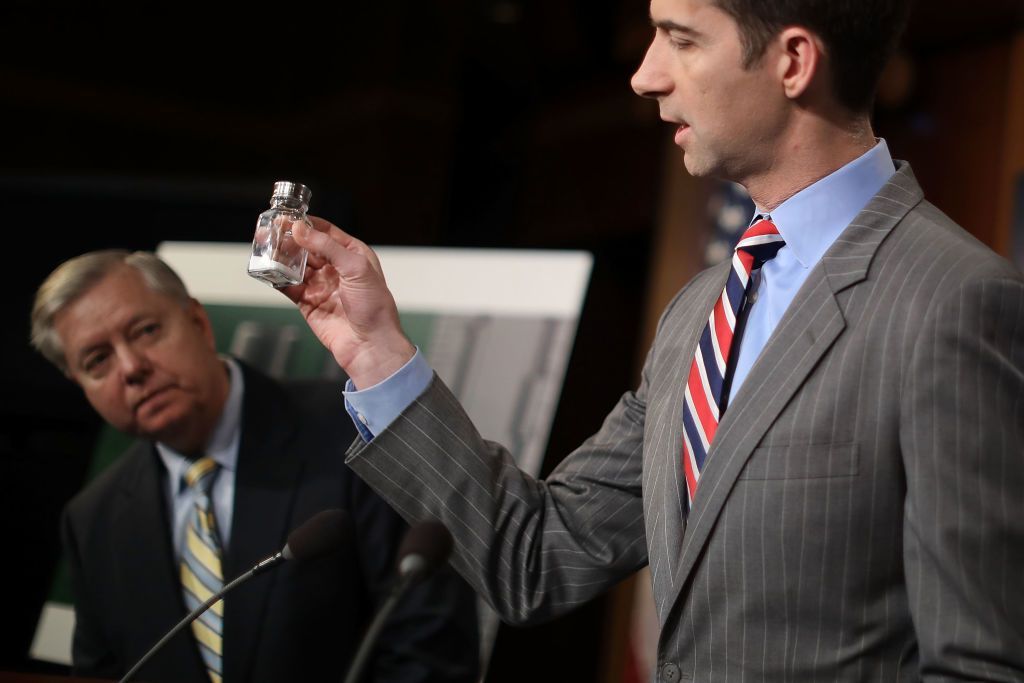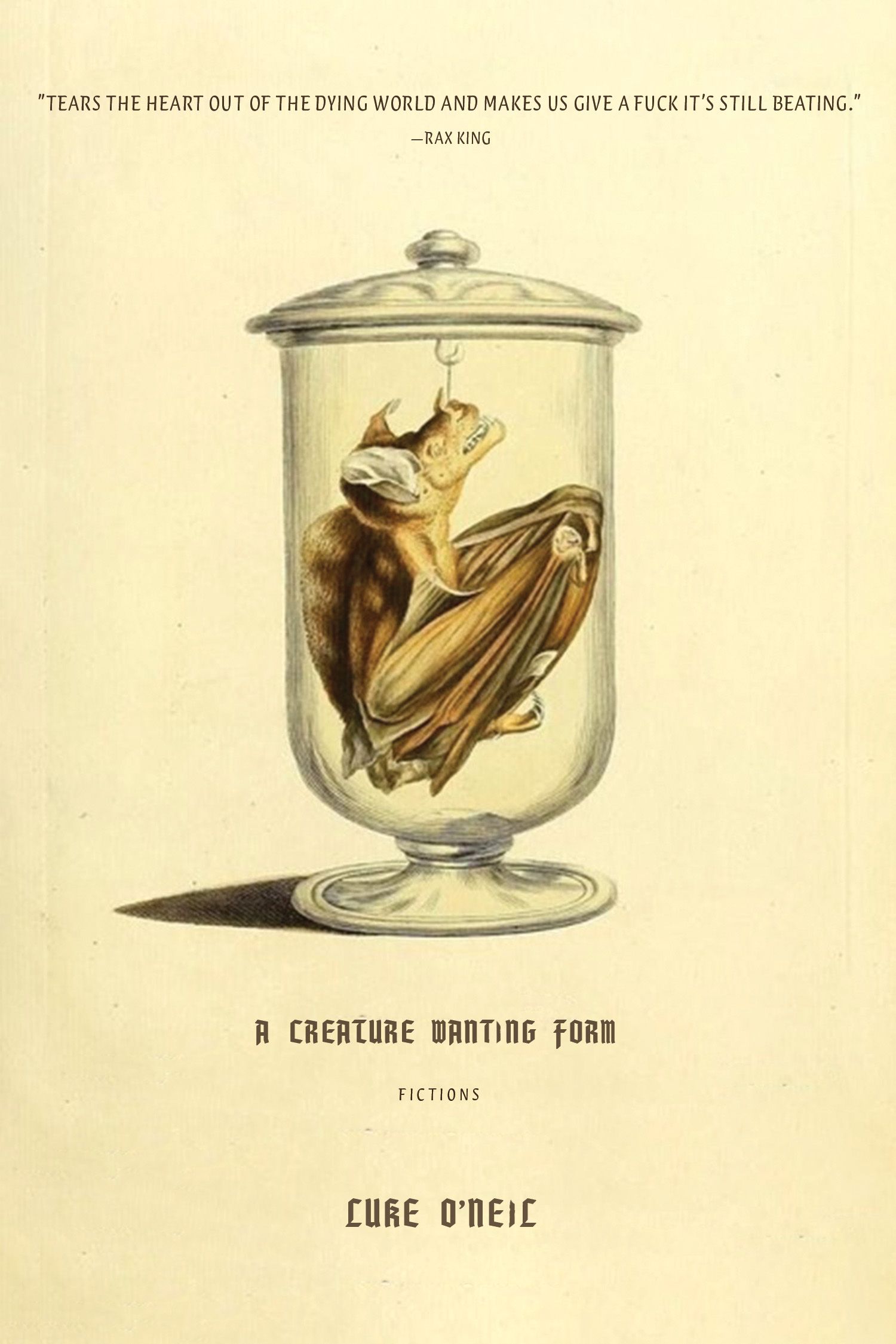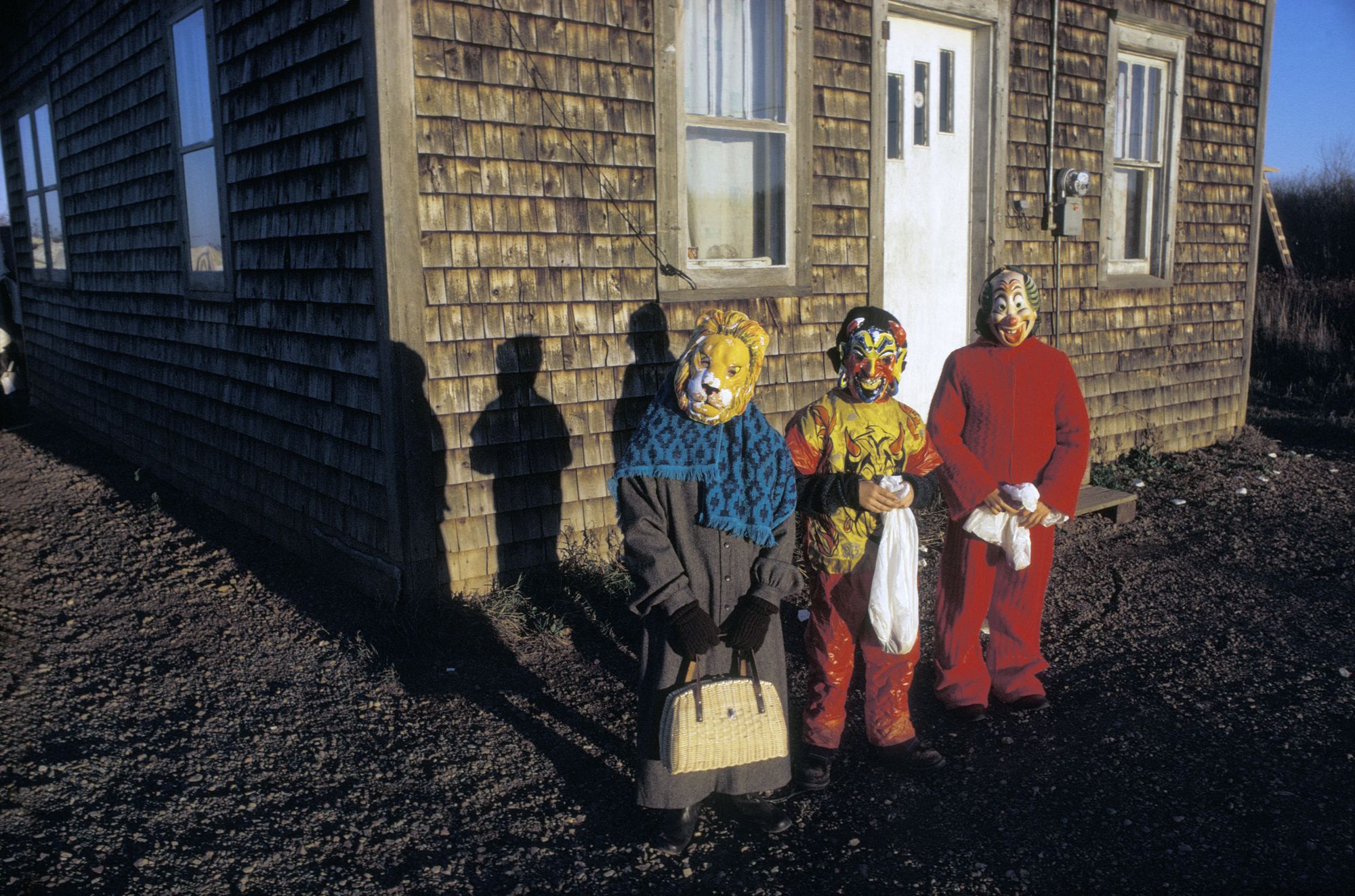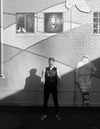My new book! + The fentanyl Halloween candy panic

Today Zachary Siegel joins us to write about the very real phenomenon in which drug cartels are trying to kill your children with fentanyl disguised to look like Halloween candy. Previously he wrote for Hell World on the only other group of people more susceptible to overdosing on fentanyl than kids: the cops.

Before we get to that though some exciting news! My first collection of short stories A Creature Wanting Form is available for pre-order now.
I have a discount code for 25% off for paid Hell World subscribers that I'll send out in the next paid piece or you can reply to this email and I'll shoot it over. For the next five people who subscribe for a year at full price I'll send you a free copy. Email me to let me know if you want to take advantage of that offer. The books will be available December-ish.
If you're media and want a review copy or perhaps to run an excerpt in your fine outlet let me know.

Here's how the nice folks at OR Books describe it:
A Creature Wanting Form is a bleakly funny work of fiction from a journalist widely celebrated for his wry, mordant take on life.
Filtered through the lens of a writer and characters who are horrified by the earth’s looming mortality, and their own, but still compelled to carry on, O’Neil interweaves science fiction, allegory, fables, poetry, and reflections on the deeply grounded indignities of modern life. In these pages, climate catastrophe lurks on the horizon; animals voraciously devour each other; your parents only call to tell you who from home has just died; and you want to go for a swim, but there’s a shark in the pool.
In short, A Creature Wanting Form is a book for anyone trying to survive with a shred of humanity in the bleak alienation of America, 2022.
If you like the Hell World pieces that long time readers know as "one of the good ones" you're going to really like this book. A few are old bits from in here that I wove into a new context but 85% or so is all brand new never seen before shit.
Here are some very kind things that friends and colleagues who I admire and also Dan Ozzi had to say about it:
Like Denis Johnson, Luke O’Neil writes with such vivid urgency that it can be physically uncomfortable to read, but the stories in A Creature Wanting Form are rendered with a lyricism that seems to be in awe of the world even as they describe its greatest pains and profound injustices. Unforgettable, original and a more than worthy extension of the far reaching and hard won empathy which characterizes the brilliant Hell World.
-Megan Nolan, author of Acts of Desperation
In these stories, Luke O'Neil yanks the heart out of the dying world and makes us give a fuck that it's still beating.
-Rax King, author of Tacky: Love Letters to the Worst Culture We Have to Offer
If you don’t hear the rhythms in Luke O’Neil’s writing, has your brain even been broken by the internet? The poster’s James Joyce.
-Spencer Ackerman, Pulitzer and National Magazine Award winning journalist and author of Reign of Terror: How The 9/11 Era Destabilized America and Produced Trump
Cunning and poetic revelations into the sick sad world we’re all glued to, woven with alluringly tapestried parables Luke O’Neil then pulls out from under us, rug-like, in choreographed slow motion. I am trying to dissociate from truth over here, Luke, and there are almost no commas for me to hide behind in this book!
-Sadie Dupuis of Speedy Ortiz & Sad13, author of Cry Perfume
Luke O'Neil has made an art of staring into the void, meticulously cataloging its horrors, and then telling them all to fuck right off. His new book is a gorgeous, unsettling, infuriating collection of essays and stream-of-consciousness poems about the daily carnage of American life, the ugly lows and brief, glittering highs of scraping by as what passes for a normal person in this country. There really is no one else out there doing what he does, and we're lucky to have him (though good luck saying something as soft as that to his face).
-Kim Kelly, author of Fight Like Hell: The Untold History of American Labor
Luke is one of the few writers who I'll read for the prose alone. In this collection he puts his formidable stylistic gifts to work in a book that captures the feeling of living in 21st-century America exceptionally well.
-Ryan Cooper, editor at The American Prospect and author of How Are You Going to Pay for That?
A lot of the stories in Luke O'Neil's collection are pretty fucking depressing, because they are about the world we live in and the world we're about to live in, but in each one there's always a bright moment of joy or a joke or a formal invention that really lights up my brain. So then I read the next one, because you've got to do something, right? Turns out the whole experience of reading the book is a metaphor for life! Shaking my damn head, I gotta hand it to Luke. He really got me good.
-Dan Kois, editor at Slate and author of The World Only Spins Forward, and How to Be a Family
Luke is scary. He makes us look at ourselves and examine our souls and think about what the fuck we are actually experiencing, as opposed to just idly sitting by as we all distract ourselves until death. I hate his writing sometimes because self examination is agonizing and depressing. But it’s also a beautiful disaster.
-Dave Wedge, New York Times bestselling author and journalist
I always wanted to know what goes on inside Luke's brain. Then I read this collection, and, well, be careful what you wish for.
-Dan Ozzi, author of Sellout: The Major-Label Feeding Frenzy That Swept Punk, Emo, and Hardcore
I am extremely nervous about this shit. Writing fiction is terrifying compared to journalism or whatever it is I do here where things that actually happened provide the restricting parameters. When you can write literally whatever it's a lot more overwhelming.
Pre-order it here.
Ok here's Siegel. A bit more from me below.

The absurdity of the Halloween fentanyl candy panic
Politicians, law enforcement, and the news media teamed up for another round of America’s favorite pastime: Spreading baseless panics about the dangers lurking in children’s Halloween candy.
by Zachary Siegel
Whenever Halloween approaches, a new social panic always comes with it. Consider the decades-old scare over “razor blades” hidden in candy and apples, memorably featured in the 1992 horror movie Candyman and its 2021 remake. It’s a film about the power of legends generated by those living in a notorious Chicago public housing project, and it understood that urban legends cannot exist, and will not be believed, without real horrors in the world to anchor them. It’s not a coincidence then that Halloween, “the scariest day of the year,” is a magnet for such panics.
Scare stories about children and their Halloween candy run deep in America. A 1970 New York Times article titled Those Treats May Be Tricks reported the multitude of threats children face on on the holiday:
Take, for example, that plump red apple that Junior gets from a kindly old woman down the block. It may have a razor blade hidden inside. The chocolate ‘candy’ bar may be a laxative, the bubble gum may be sprinkled with lye, the popcorn balls may be coated with camphor, the candy may turn out to be packets containing sleeping pills.
The notion that razor blades and other dangers are being hidden inside of Halloween candy is based on exaggeration, maybe at best a one-off fluke incident. But given the right context and time, these stories fester into bona fide urban legends.
(Perhaps the real horror here is the fact that kids used to get apples instead of candy on Halloween).
This October we saw a new spin on the tried and untrue Halloween candy panic story. More than a dozen Senate Republicans recorded PSAs warning their constituents that “powerful drug cartels are coming after your kids” this Halloween. One of those Republicans happened to be Shelley Moore Capito of West Virginia, who presides over a state with one of the highest overdose death rates in the nation. “Fake pills laced with fentanyl are beginning to look like candy in an effort to lure young Americans,” Capito said in her ad.
West Virginians are not in fact dying en masse from overdoses because their candy has been poisoned. But what this yarn about fentanyl-laced Halloween candy obscures is the true terror of living in a society where tens of thousands of people are dying from preventable deaths, while so little is being done to stop them. These mythical scare stories keep the real horrors of American society hidden.
The Halloween candy panics of yore were grounded in fears of anonymous sadists committing random acts of violence, mirroring the “stranger danger” narrative of the 1980s and general anxieties around muggings and crime, according to a 1985 article on urban legends published in the aptly named journal Social Problems. The real horror hidden there is that most brutal crimes are not random, and instead happen between people who know one another. Not so in the updated version of the legend, which, like everything else in the past few years, has a distinctly partisan flare to it, naming precise enemies with nefarious agendas: Mexican cartels, open borders, immigrants, and President Joe Biden’s agenda writ large.
“As Halloween approaches, mothers like me are terrified,” Republican National Committee chairwoman Ronna McDaniel wrote for Fox News. “Thanks to reckless open-border policies that create perfect conditions for ruthless drug cartels, our children are now on the front line of a drug crisis.”
Fears over fentanyl candies slot neatly into the right’s favorite and oft-repeated talking points. Their grievances serve as foundational context that makes such an absurd story track as both legible and believable. Months ago on the campaign trail, JD Vance accused Joe Biden’s drug policy of intentionally trying to kill “MAGA voters” across red America. It makes sense that these drug panics have taken on a new life now during Halloween, a month before midterm elections, where the right hopes to retake Congress by amplifying the specter of crime and disorder, all symptomatic of life in a too liberal and Godless society.
But it’s not just right-wing media and Republicans pressing the panic button this October. Daytime TV shows for normies in the suburbs, like Good Morning America and the Today Show, also ran with the fentanyl candy panic by airing dire warnings to parents that their children are being targeted by Mexican cartels. “All parents need to hear this story,” the Today segment began. For this scary story to have purchase in so-called mainstream news outlets, it helps to attribute the claims to a credible authority figure. And what authority does American media rarely ever question? Law enforcement.
The entire “rainbow fentanyl” saga – just like the “fentanyl exposure” myth – can be traced back to one of America’s most incompetent federal law enforcement agencies: The Drug Enforcement Administration. Their sole job is to ostensibly safeguard and regulate “controlled substances,” substances that they constantly demonstrate they have no control over. On August 30, the DEA kicked things off with a conspiratorial press release about pastel-colored fentanyl tablets being seized around the country. DEA Administrator Anne Milgram called rainbow fentanyl “a deliberate effort by drug traffickers to drive addiction amongst kids and young adults.”
By October, the DEA’s “rainbow fentanyl” threat had morphed into a new Halloween panic. “This is deliberate. This is a calculated, treacherous deception to market rainbow fentanyl like candy,” Frank Tarentino, the DEA Special Agent in Charge said in a press conference that was widely circulated by local news outlets. “This is every parent’s worst nightmare, especially in the month of October as Halloween fast approaches."
The DEA ignored my multiple inquiries asking to show their evidence that colored fentanyl pills are part of a cartel plot to entice and lure children as fentanyl customers.
By now, you’re probably familiar with what usually happens next in this sort of news cycle. The sane and reality-based sectors of the media, the so-called “liberal media,” respond with their preferred antidote to all this fear and paranoia coursing through the American mind. If this antidote had a name it would be something like Debunkergen, Debunkinex, or maybe FactCheckafin. NPR, Salon, Rolling Stone, Snopes, PBS, Buzzfeed, and many others ran versions of the story: “Experts Say No! Rainbow Fentanyl is Not Going to be In Your Kids’ Halloween Candy.” (Reading any of these gives you a sense of why this panic is so silly).
Even outlets like the Today Show that helped spread the baseless story in the first place ran a sober reality check, telling parents that, actually, nevermind, they need not worry about fentanyl candy. The DEA’s Anne Milgram had to go on Fox News and utter this remarkable sentence in reference to rainbow fentanyl: "We have not seen any connection to Halloween.”
Corrective fact checks and debunkings are certainly welcome. I myself often contribute to the myth-busting genre of drug journalism, like I am right now. But I find myself frustrated that the damage has already been done. The fact checks don’t stop the story from being widely believed. After all these years covering drugs in America, I’ve learned that Ben Shapiro’s favorite line, “facts don’t care about your feelings” has it backwards: Our feelings, frankly, don’t give a fuck about the facts. (Shapiro’s The Daily Wire, naturally, ran a couple stories this year about rainbow fentanyl “targeting kids.”)
This woman thinks drug dealers are handing out fentanyl on Halloween. Why? Because Fox News told her. pic.twitter.com/BHRErKO17M
— The Good Liars (@TheGoodLiars) October 6, 2022
An online show called “The Good Liars,” in which comedians seek to unravel the silly stories believed by everyday rubes, illustrates my point. One of the show’s hosts calmly grills a woman wearing a Trump-Pence sweater who is ranting and raving about fentanyl-laced Halloween candy. Here’s the exchange, where the host tries to own the lady with logic, to no avail:
Host: “Drug dealers a lot of times want to sell their drugs.”
Woman: “Umm –– well, not if they’re coming over here to destroy our country.”
Host: “So the drug dealers have houses that the kids will come and knock on the door and they’ll give [fentanyl] to them?”
Woman: “I’m thinking that’s how it’s going to happen, yeah.”
This conversation could go on and on. No amount of cool-headed reasoning can change her mind, not even the fact that young children with perhaps a small weekly allowance, at best, tend to make for lousy drug customers. Not to mention that a child with no physiological tolerance for opioids would most certainly die from taking street fentanyl. What exactly is the drug cartels’ motivation here again?
On top of all that this whole thing exposes a glaring contradiction: Police officers can’t even touch the stuff without overdosing, and yet children can somehow consume the drug, survive, and become addicted? Makes tons of sense.
The fentanyl candy panic is so baseless, and so absurdly implausible on its face, yet there’s a slice of America who will believe it no matter what. And this is where things get tricky for someone like me, whose job is to gather information and write it down in a digestible form for public consumption with the hopes that people take it in and use it to inform their view of the world.
Confronting the truth that “feelings don’t care about facts” is to continuously swallow a bitter pill. But it also helps me make sense of the senseless. Instead of bashing my head against the wall out of frustration and helplessness, this formulation helps me ask a different set of questions. For instance, what are the feelings at work here? Why might one be so motivated to believe in such a story?
“Like collective hysteria and organized claims-making efforts, urban legends are a product of social strain and of the social organization of the response to that strain,” the authors of that 1985 paper on urban legends wrote. The researchers suggest that urban legends and social panics have a slew of psychological and relational functions for the believers. Candyman seems to have understood this about urban legends. Living in the ruins produced by American racism in the real world can be fuel for powerful stories that bind imaginations.
The researchers write that myths provide an alternative story to the “social strain” people live under. Myths help people cope with the structures of society that we feel powerless to change even as they produce worlds of hurt. The very real anxieties, fear, and anger people feel – the kinds of feelings we are all adept at repressing – will find a way to be expressed. And so the scare story, such as a bogus drug panic, opens people up to a new terrain of responses to the world, which in turn creates meaningful connections with like-minded others, forming the bonds necessary for social organization. Just like in the world of QAnon and the 2020 election deniers who met up on January 6th to try and assassinate Mike Pence. Put this way, one can understand how facts and reason don’t stand a chance.
How does this theory map on to the fentanyl-laced Halloween candy panic? I have some ideas.
Over the past several years, hundreds of thousands of American families have seen friends and loved ones struggle with addiction or die from an overdose. This is just one of myriad “social strains” that millions of Americans are reeling from everyday (also see the pandemic we’re supposed to pretend is over). Illicit fentanyl is by far the biggest contributor to overdose deaths, and is no doubt a very real danger. But here’s the thing: Fentanyl is a danger to people who are using and buying illegal drugs, not to trick-or-treaters on Halloween. And in America, drug users are usually marginalized and deemed criminals, and they’re often blamed for their own demise.
It makes sense that people might be seeking an alternative story.
Over several years of interviewing and getting to know parents who have had to bury children because of an overdose, I’ve seen how they wrestle with immense guilt and anger. Their number one job is to protect their child from harm, no matter how old their child is. Many grieving parents will turn inward and wind up blaming themselves. They confront painful questions, “Where was I when this happened? Why wasn’t I there?”
I’ve seen some parents turn their pain and grief into advocacy for harm reduction. They’ve committed their life to educating others about the overdose antidote naloxone, for example. I’ve seen parents identify stigma and drug criminalization as insidious forces that made their child feel shame, use drugs in secret, and not ask for help when they needed it. They advocate for ending prohibition.
But I’ve also seen parents cast about and find other external enemies to blame. Maybe it’s the neighborhood drug dealer who they think must be incarcerated. Or maybe the president’s so-called “open border” policies. Or maybe an evil cartel plot to poison America’s youth. It is easier, perhaps, to blame a cast of abstract villains than to examine the sad reality and face the horror of what really produced such a devastating loss.
Not everyone who believes in this latest fentanyl panic has experienced addiction or an overdose in their family. But scratch beneath the surface, and there is likely some pain, anger, and dispossession that is searching for the right story to express its discontent. This is not to excuse those who believe in outlandish panics and advocate for a brutal and racist drug war. The point, instead, is to understand why so many are so eager to drink from a fountain of lies in the first place. And it’s because that fountain tastes better.
The main problem with this Halloween candy panic isn’t necessarily that it’s completely fabricated. Yes, that’s bad, and the news should not broadcast obvious false information. But more pernicious still, is that these sorts of narratives obscure important aspects of American society, papering over the real horrors of being alive right now, horrors that remain unspoken so long as we are all locked in a game of media ping-pong, trading volleys back-and-forth, serving up facts that beget evermore creative lies.
Underneath the absurd stories people believe is a deep well of grief, anger, and pain that is begging for a way to be released and resolved. There’s something all too human going on here.
Who has the time to overthrow the structures of society producing such grim outcomes if we’re all busy yelling at shadows and vapors? Social panics are an ingenious social innovation. It’s hard sometimes to not just marvel at the stories the human mind can conjure. But on this Halloween, let’s try and stay focused on the real horrors of life in America. We’ve got enough to choose from without having to invent them.
Zachary Siegel is a freelance journalist covering drug policy and harm reduction. He co-writes the Substance newsletter with Tana Ganeva. His work has also been published in The Nation, The New Republic, Slate, New York Times Magazine, and elsewhere.

Watch this video if you haven't seen it. Now here's a dude. Takes balls of steel to give a speech like this in front of some cops who just gave you a medal.
Alex Mingus is a real-life hero in St. Paul, MN. He heard gunshots, and made contact with the victim who was bleeding profusely. He stepped up and wrapped a shirt around their arm, slowing the bleeding and saving their life. pic.twitter.com/X9hU57KUaa
— Empress Blue (@wokemelaninaire) October 16, 2022
Man I really really liked the latest issue of the Small Bow. It's the best written newsletter I read. It goes in part like this:
It was a half-empty flight, and there was an eerie lack of turbulence, even on takeoff. It was like the plane just floated the whole way there. I sat in the middle row. I had that paper pillow behind my neck, but I didn’t sleep. I had a tin of Kodiak with me, but I didn’t need it. I usually bought some because I couldn’t fly for more than two hours without nicotine for most of my adult life. I used to buy a Snapple at the airport, chug it all before takeoff, and then spit in the bottle throughout the flight. I’d get up once or twice to dump the sloppy brown dip spit from the bottle into that noisy toilet. Sometimes the tobacco hunks stuck to the insides of the bowl. I would reach in with one of those cheap paper towels and scoop it out because I didn’t want the next person to think I was a scumbag, even if I was.
No dip on this flight, though! That felt like a huge first step away from the darkness and into whatever light awaits after I get back from rehab. I drank two cans of “Mr and Mrs T’s” bloody mary mix without any vodka. I stared at the can and realized there are no periods after the r and the s. Without any vodka, you notice things like that.
...
But the idea that I would disappoint people again—I can’t. Then I got really cold. I felt that kind of cold once when I had some minor heart surgery to repair a troublesome tachycardia. I’d been operated on before, but this time for whatever reason—the scratchy gown, harsh lighting, some rando intern using a plastic disposable razor to shave my groin area—I began to shake. I shook like my dog used to when we took her to the vet. “He’s got the shivers,” one nurse told another nurse. “Can we give him something for the shivers?”
When I walked out of my gate, a caramel-sunburnt man of about 60 named Bud was waiting for me. He held a sign with my last name misspelled. He was there to drive me to the detox center a few miles away. On the way there, he talked about how he was retired and volunteered for this gig because his ex-wife was “one of you guys.” He said being a rehab taxi has made it easier to forgive her for the hell she had put him through. He let me smoke in the car the whole way there, so it was a nice ride.
Look at this shit. Look at what we've lost here. All those beautiful fresh donuts.
In MA the birthplace of Dunkin (no Donuts in the name anymore) you get absolute dogshit day old donuts with like 4 styles made offsite and everyone working is running a marathon their entire shift microwaving egg patties and toasting medium rare bagels. https://t.co/iOqYWfmeij
— luke (@lukeoneil47) October 18, 2022
And for all this expansion and efficiency the company has made their stores a place no one would ever want to linger. Community gathering place, now pay for your shit and get the fuck out. You could write the history of the last 50 years on how Dunkies stores have changed alone.
— luke (@lukeoneil47) October 18, 2022
Alright that's all for today. Thanks for reading.
